If there was one station that missed in our three year long tour of Metro-North’s system, it would likely be Highbridge. Although in the past it was a station open to public access, today it is an employee-only station, complete with a small platform and overpass, and many of the same amenities one would expect from a regular Metro-North station. I figured today might be a good day to check out this station that is normally off limits to the public, especially since High Bridge has been in the news recently.
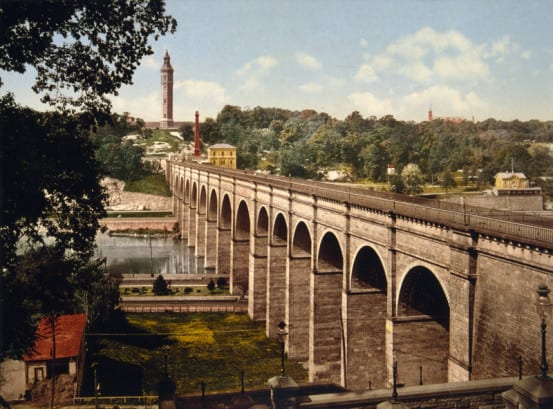
The famous High Bridge, New York City’s oldest bridge.
The facility here is, of course, named after the Aqueduct Bridge, or better known as High Bridge. The bridge’s roots stretch all the way back to 1848, making it the oldest bridge in New York City. As one would gather from its original name, the bridge was an important part of the Croton Aqueduct, supplying New York City with fresh water. Originally a stone arch bridge, five of the arches were replaced with one steel arch in 1928 to allow easier water navigation under the bridge. By this time the bridge was largely obsolete, and no longer carrying water – however it did serve a secondary purpose as a pedestrian crossing. That crossing was closed in the 1970s, until it was recently reopened last month after many years of restoration. From the newly reopened pedestrian crossing, one can get quite a good view of what is now a Metro-North railroad facility below.
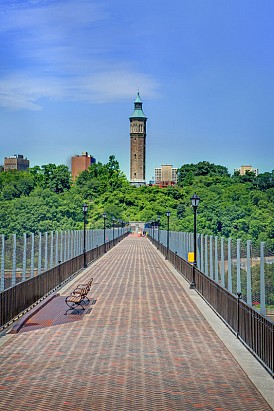
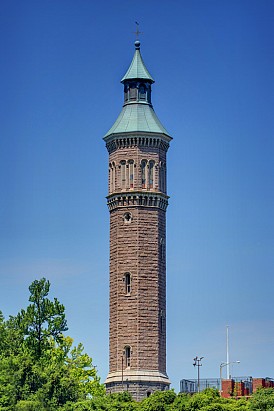
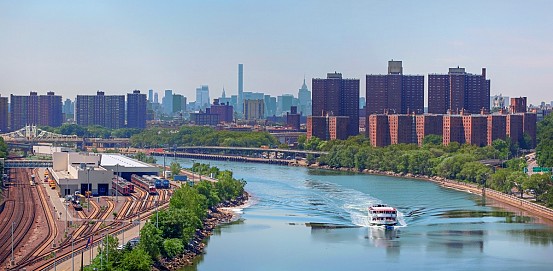
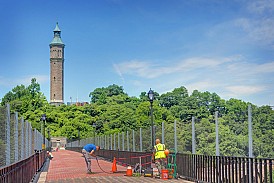
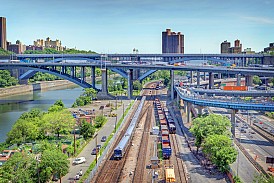
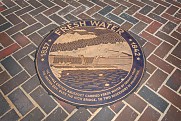
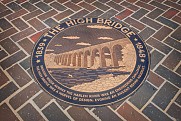
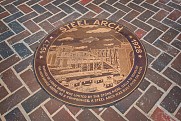
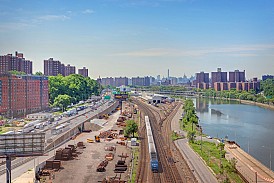
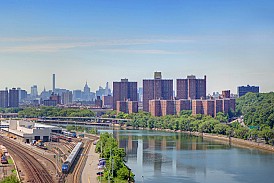
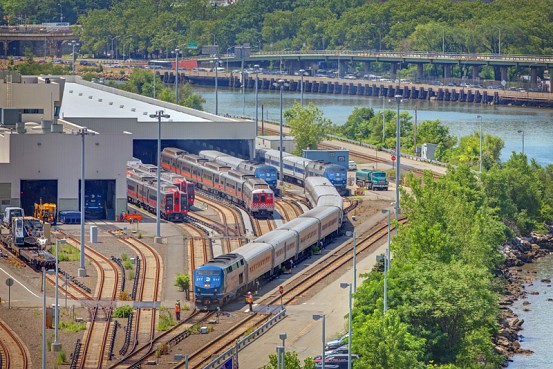
The view from the newly reopened High Bridge
Today, Highbridge is where you will find Metro-North’s Car Appearance Facility, where both interior and exteriors of train cars are cleaned. Highbridge is one of three Metro-North washing facilities, and it possesses state-of-the-art brushes and sprayers that use 280 gallons of water per minute – 200 gallons of which are recycled, making it more environmentally friendly. 20 cars can be cleaned every shift, and each car gets this full treatment about every 60 days. The washing is completely computerized, and does not require an operator.
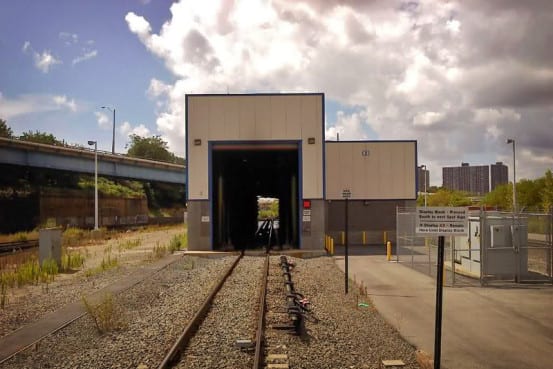
Heading into the Highbridge car wash. Photo by Paul Pesante.
In addition to the appearance facility, Highbridge provides storage tracks for trains that is close to the city. While in days gone past, the New York Central used Mott Haven for this purpose, most of Mott Haven’s tracks were ripped out long ago. Highbridge has stepped up to fill that gap, which will especially be needed due to the East Side Access project, where Metro-North needed to give up quite a few storage tracks in Grand Central in order to bring Long Island Rail Road trains to the east side.
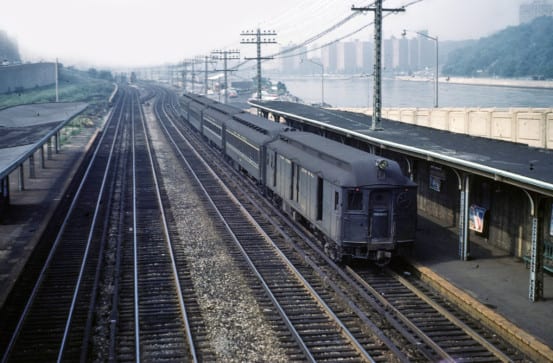
The original passenger station at High Bridge in 1961. Photo by Ed Davis, Sr., from the collection of David Pirmann. By the 1970s the station had some scheduled trains, while on others it was listed as a flag stop.
Other noteworthy details about Highbridge are that you can see some old remnants of the New York Central’s Putnam Division here – Highbridge was a point of transfer between the Hudson and Putnam Divisions. It is also where the Oak Point Link joins with the Hudson Line, permitting freights to avoid the bottleneck of Mott Haven to get to Oak Point Yard.
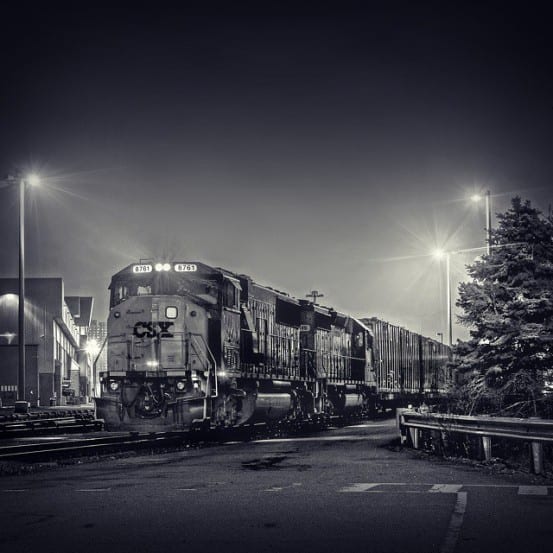
The evening CSX garbage train waits at Highbridge after coming on to the Hudson Line from the Oak Point Link
Anyway, let’s take a quick behind-the-scenes glimpse of Metro-North’s official employee station at Highbridge… the only place we neglected on our original tour of the Hudson Line.


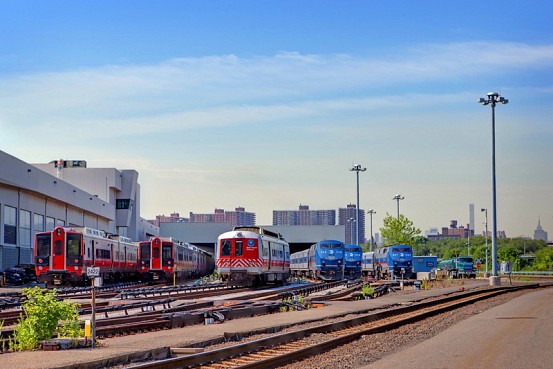
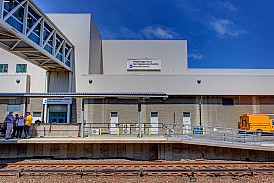
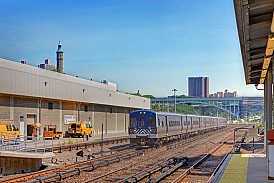
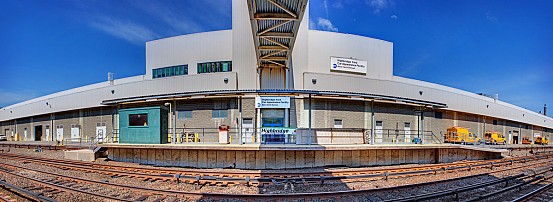
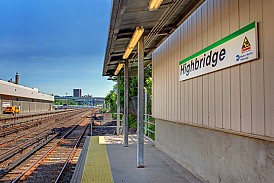
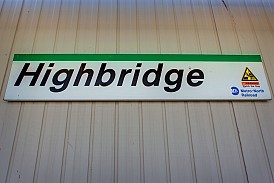
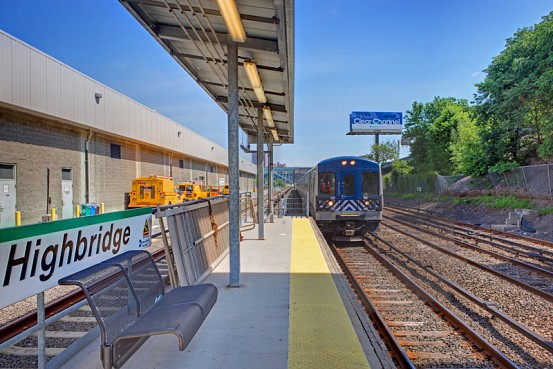
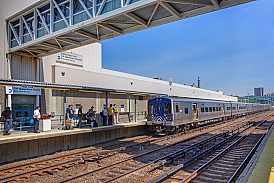
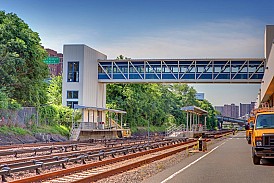
Cool. The picture of the 4000-series MU baggage car brings back memories. Working as a construction laborer in NYC, during summer ‘vacations’ from college, I could get rather filthy. Often, I would ride the baggage car on my commute to Fleetwood. Sometimes a seat would be available on a ‘rough box’, the protective container for a coffin destined on line. A few stations had freight elevators to handle human remains and baggage, including Woodlawn, Mount Vernon, Tuckahoe, and White Plains. Nice ride, in the baggage or combine cars, for me and the ‘dearly departed’.
Emily, do you have any information as to how the Put trains got down to the High Bridge station and yards? My concern is the height of the south Westchester and Bronx terrain being much higher than the sea-level grade of the High Bridge facility. Lou Grogan has many photos in his Harlem Division book showing the same Put F-Class steamers at High Bridge that I used to see at Yorktown Heights, and they had to get there somehow. What was the Put’s route and what grades did it encounter coming down to High Bridge?
The Put from BN to SK followed the Hudson line on it’s own ROW to their yard and station at Sedgewick Ave,
where passengers transfered to Hudson line locals to GCT. BN tower was the freight connection point
and when there was 3rd rail on the Put to Getty Square station in Yonkers.to allow thru service to GCT.
The Put’s ROW started to rise above the Hudson line ROW at BN to Sedgewick Ave
Both the Harlem Line to Put Jct and the Put to BN served as the “High,Wide,and Heavy” freight
route to New York City
There was never thru service from the Getty Square branch to GCT for the MU cars. Union intrangience and work rules wouldn’t allow that! The ‘myth’ that there was no room in GCT for Yonkers branch trains is just that.
Try the junction at “BN” tower (Marble Hill) and the High Bridge yard, too. Both at the same elevation as the Hudson Division. Factoid: The “Put” did run in Manhattan (New York County). Marble Hill is still Manhattanland. It physically, but not politically, joined the mainland (Bronx County) when the Harlem River Ship Canal was dug.and the meander was land-filled. Also, the bridge at Sedgewick Ave., over the Harlem River, terminated at 155th St. (Polo Grounds) in Manhattan, until conveyed to the IRT. Gone-zo, now (bridge, 155th St. station, Polo Grounds, and the IRT el into The Bronx.). Credit various sources: Gallo, Kramer, Bang, Vondrak, et al.
The Highbridge yard in the past had been used as the Central’s Flexi-Van yard,(An early version of
Intermodal service)and a Roadrailer yard in the late ’70’s-early ’80’s as a proof of Concept test
with Conrail.
The ‘Flexi-Van’ service was innovative, but unionized-labor intensive. NYC’s restrictive height clearances limits the Hudson Line’s capacity to this day.
Thanks all for this information. Although growing up in the general area, I had never visited the southwest Bronx, riding the Harlem exclusively. Thus I had not idea the Put followed the Hudson until BN-ish. However, I do remember often seeing freights beside the Sawmill River Parkway.
Hank: I may have misstated that the Put ran in Manhattan in the isolated Marble Hill section. My maps are not detailed enough for me to really tell. It didn’t get anywhere near the Hudson River, but followed the Harlem River, and then up the Saw Mill River valley.
The Harlem River, later in the waterway’s westward journey (flowing east), connected to the man-made Harlem River Ship Canal and Spuyten Duyvil Creek to the Hudson. Confusing? Yar!
After the NY Central abandoned the Put from Lake Mahopac to Eastview,the largest freight
customers were a Chemical Co. in Ardsley and the A&P Grocery Warehouse in Elmsford.
After A&P went to trucking everything to the warehouse,Eastview to Stella Doro Bakery
in the Bronx was allowed to go to seed.
seriously wicked photos mate! love reading your work and the images are awesome. keep it up! would love to get to the states some day to check out this network. so many awesome spotting locations you have featured.